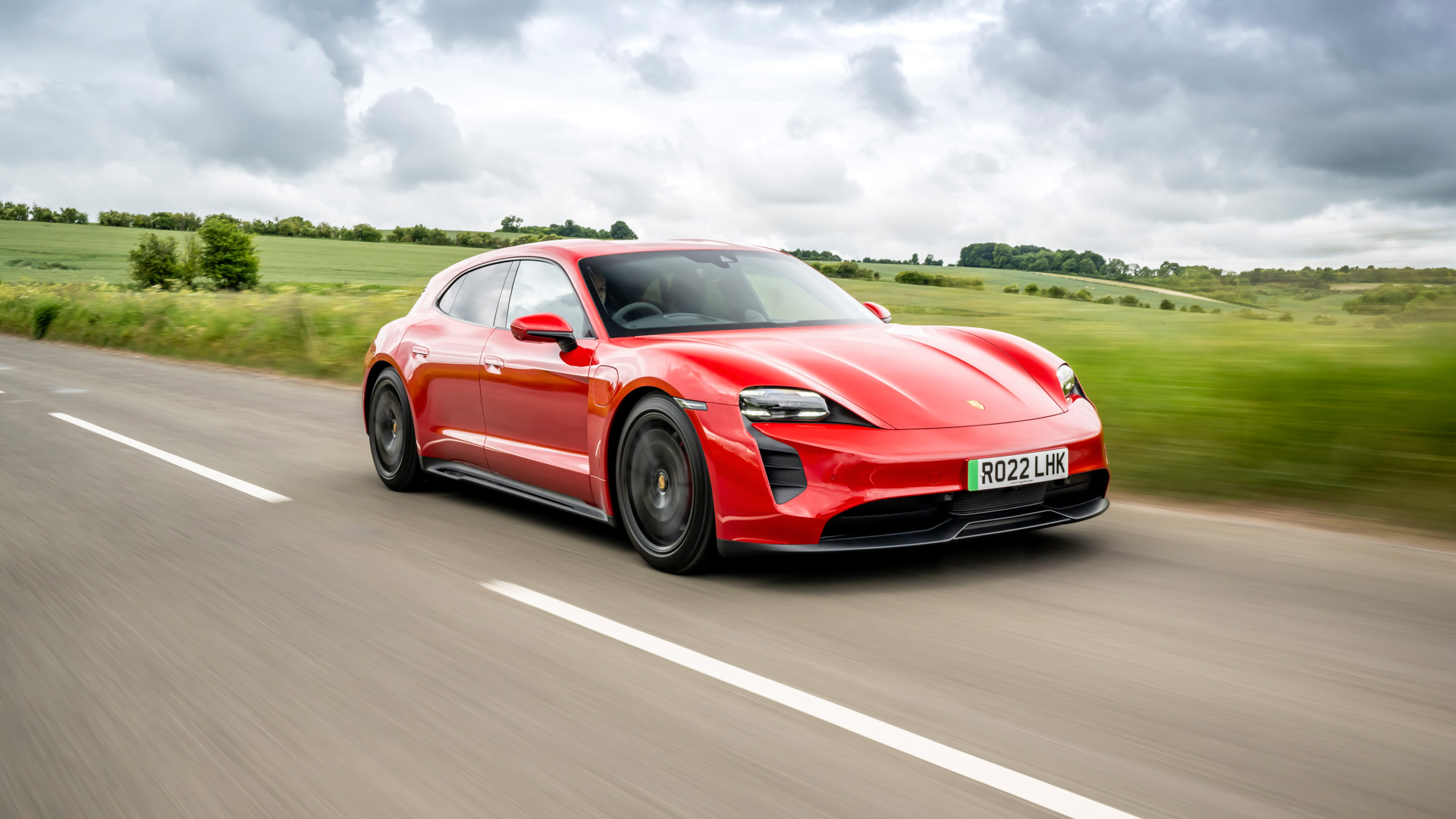Five charging lessons I learnt from an EV weekend road trip
Electric cars and the charge network are improving, but planning ahead is still vital


EV range is increasing all the time, mapping software is constantly being updated, and charge stations are popping up all over the country. In fact, the situation is evolving so rapidly it feels like this sort of article needs to be written every few months.
Although improving all the time, taking an electric car on an extended journey still requires more effort than with a petrol or diesel vehicle.
I recently borrowed a Porsche Taycan GTS Sport Turismo and drove it, complete with three passengers and a boot full of camping gear, from South London to a wedding in rural Worcestershire. How rural? The venue is the only address in the entire postcode, accessed by a long, winding and very narrow gravel track. Safe to say, there were no charging facilities on-site.
Getting to the venue without plugging in would be no problem for the Porsche, even though this model of Taycan can only realistically do 200 to 220 miles between charges.
But with the very real possibility of asking three hungover passengers to bear with me while we hunt out a charger, in the countryside on a rainy Sunday afternoon, the drive home could be more of a challenge.
Here are five things I learnt from my weekend with the Taycan.
1. Range accuracy matters more than outright stamina
Porsche claims the Taycan GTS Sport Turismo can cover between 263 and 304 miles on a full battery. In the real world, you’re more likely to see a maximum range of 230 miles. At the start of my journey the car was charged to 98% and stated 225 miles of range in Normal mode. Switching to the frugal Range mode added 12 miles, while Sport and Sport Plus took the figure below 200.
Get all the latest news, reviews, deals and buying guides on gorgeous tech, home and active products from the T3 experts
Regardless of what the car is actually capable of, the accuracy of the remaining range readout is absolutely vital. I found the Porsche’s to be excellent, ticking down gradually as we covered the miles, and predictably falling more quickly with increased cruising speed. On that note, the Taycan is particularly good at efficient motorway cruising – something that usually destroys the range of other electric cars.
2. Careful road trip planning it still vitally important
Did you spot my first mistake? I opted against charging on the outbound Saturday journey, instead kicking the can down the road and hoping we’ll find a suitable high-speed charger on Sunday morning. Electricity for the car, a big fried breakfast for us.
We arrived at the venue with about 60 miles of range remaining. The next morning I consulted the excellent ZapMap application – which I’d filtered to only show the fastest, 350 kW chargers with which the Taycan is compatible – and realised my mistake. There was a 350 kW charger within range, but at a Porsche dealership that doesn't open on Sundays.
The next 350 kW charger was just out of range, at about 70 miles from our starting point. Given the accuracy of the Taycan’s range indicator, I didn’t fancy my chances of squeezing an extra 10 miles out of it. Not with those hangovers in the back seats.
I should have stopped at the same rapid charger yesterday, regardless of whether the car needed it or not. Instead we’d stopped for breakfast early in the journey, when the battery was still in the high-80s. Lesson learnt: think about the car’s dietary requirements as much as your own.

3. Chargers are not always as fast as advertised
New plan formulated, I found a 150 kW charger at a garden centre 30 minutes away. I planned for a quick top-up here, then a longer stop at the 350 kW charger, at a motorway service station where we could also get some much-needed lunch.
Operated by Mer, the garden centre charger’s contactless payment system wasn’t working. I downloaded the app, created an account, added my billing details and hooked up the charger, only to find it wouldn’t budge beyond 45 kW, less than a third of the advertised charge rate of “up to 150 kW”.
We killed time looking at patio furniture and the garden aquatics centre, bought a slice of cake (for breakfast…), and coughed up £13.62 for a tiny 17.46 kW. That's 79p per kWh, which is more expensive than an ultra-fast, 350 kW Ionity charger.
Given the fully-loaded Porsche’s appetite, this would only be enough for about 60 miles of motorway cruising.
4. Service stations need a queuing system
An hour later we reached Cherwell Valley Services, which is equipped with a bank of 350 kW chargers from Gridserve. They were all occupied, but being so fast means there shouldn’t be too long to wait. Unfortunately, and this is always the case, there’s no queuing system.
I drove around a couple of times – the location of the chargers forces you to ignore the one-way signs and drive the wrong way around the car park to get back to them – and eventually pulled in to one side with the hazard lights on. Another Taycan stopped behind me, creating an informal but well-behaved queue.
Ten minutes later, a charger freed up and I was able to plug in and charge at the Taycan’s maximum 270 kW rate. In the 40 minutes it took to order our food and eat, the battery was filled to just over 90% at a cost of £54.42.
That feels expensive, and in hindsight I should have set the car to stop charging at a certain percentage, or moved it away from the charger after 20 minutes. And I know 40 minutes seems like a long stop, but it was a busy weekend and we had to queue for our food.
5. Subscriptions can save you a lot of money
High-speed charging at convenient stations is expensive, just like how petrol costs more at motorway services than elsewhere. But there are ways to lower this cost.
The Taycan was kindly delivered with a contactless card for using the Porsche Charging Service. This gives access to the chargers at its dealerships, plus the high-speed Ionity network and others (360,000 chargers across Europe, Porsche says), without the need to create an account and download an app for each service. It also significantly lowers the cost of charging.
For example, Ionity currently costs £0.74 per kWh if you’re not a member. But with Porsche’s card that cost is reduced to a far more reasonable £0.30 per kWh. The card is free with every new Taycan and works for three years, after which it costs £179 per year.
Unfortunately for my journey, Mer and Gridserve are not part of Porsche’s network, so the card didn’t work. But if you regularly use Ionity, a 44p saving per kWh can quickly add up. Based on that saving, the £179 annual fee and the Taycan’s 83.7 kWh battery, savings would cover the yearly cost after around five full charges, or about 1,000 miles of driving.
Ultimately, I paid the price for not planning ahead. A 10-minute stop at the Gridserve charger on both Saturday and Sunday would probably have been enough to complete the entire 300-mile journey.
Alistair is a freelance automotive and technology journalist. He has bylines on esteemed sites such as the BBC, Forbes, TechRadar, and of best of all, T3, where he covers topics ranging from classic cars and men's lifestyle, to smart home technology, phones, electric cars, autonomy, Swiss watches, and much more besides. He is an experienced journalist, writing news, features, interviews and product reviews. If that didn't make him busy enough, he is also the co-host of the AutoChat podcast.
